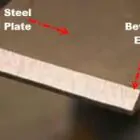“Heißeisen” metalwork fitters have a big job that requires them to work with a lot of different materials in a modern building complex: The MAG welding process is used to join together a lot of unalloyed steel shelving units in the storeroom and chrome-nickel stair railings. The TIG process is needed because the weld seams on the handrail now have to be perfect in both how they look and how they feel. The final assembly work on an open Skywalk at great heights was a literal high point for “Heißeisen.” Wind and weather make it almost impossible to do good gas shielded arc welding in these conditions; welding with a rod electrode is the best way to do this. Multiprocess welding systems make it easy and quick to do all three types of welding. To know more about how is multi-process welding system helpful, read ahead,
MIG/MAG, TIG and MMA Welding in One Welding System.
Multiprocess welding is the thing that everyone is talking about in the welding world. Multiprocess welding systems, as they are called, can do almost any common welding job, so the word is. But this is not even close to a new way to weld. In fact, “multiprocess” means that the three main ways to manually weld are all put into one system.
But why is this happening? First and foremost, it’s about giving all welders the chance to do a wide range of everyday tasks with just one system. Instead of bringing a different system for each process, they can easily deal with a wide range of welding problems with just one system. Users can switch between processes in the blink of an eye. They can switch the welding torch, gas, and wire, and set the parameters, all in less than 60 seconds.
What you really need to know about multiprocess welding systems.
A good system with multiple tasks should…
- Cover a wide range of materials and thicknesses: steel, aluminium, chrome-nickel steel, and other materials from about 0.5 to 8 mm thick are standard here.
- Be able to handle different types of additives, such as welding wires, wire sizes, and gases.
- If possible, consist of two gas valves so you can use different gas mixtures and switch quickly based on the process.
- Have a variety of pre-programmed welding settings for filler metals, wire diameters, and gases.
- It has a higher open-circuit voltage so that MMA welding can be started easily.
- Is built with weight in mind to make it easier to move.
- If a power source has all of the above features, you can start to talk about it as a strong multi-process system. Easy handling is also important to win over welding professionals in their busy daily work lives.
Who can use a welding system that can do more than one thing?
This is made clear by the user example: Multi-process welding systems are a useful tool. Especially for small to medium-sized workshops. But multi-process can also be a good choice for professional one-man operations that want to save money. If you want to use the most up-to-date welding techniques without having to buy different welding systems. The multi-process tool is your best bet. The investment costs aren’t that high, but the usage is pretty high.
Still, some manufacturers give the impression that multiprocess welding systems are universal solutions that can’t be changed. This is not at all the case. Of course, there are process-specific benefits to using specialised systems. On the other hand, to stay true to the all-rounder principle, many of the processes built into multiprocess systems have been simplified without limiting their functionality. For TIG welding, for example, there is no high frequency ignition, which makes it possible to start the welding without touching it. This doesn’t make the requirements much more difficult in terms of dexterity. Still, the result of the welding is still of the same high quality.
Multiprocess welding systems not only increase the number of products a manufacturer can make. They also help to close some gaps in craftsmanship on many levels.





